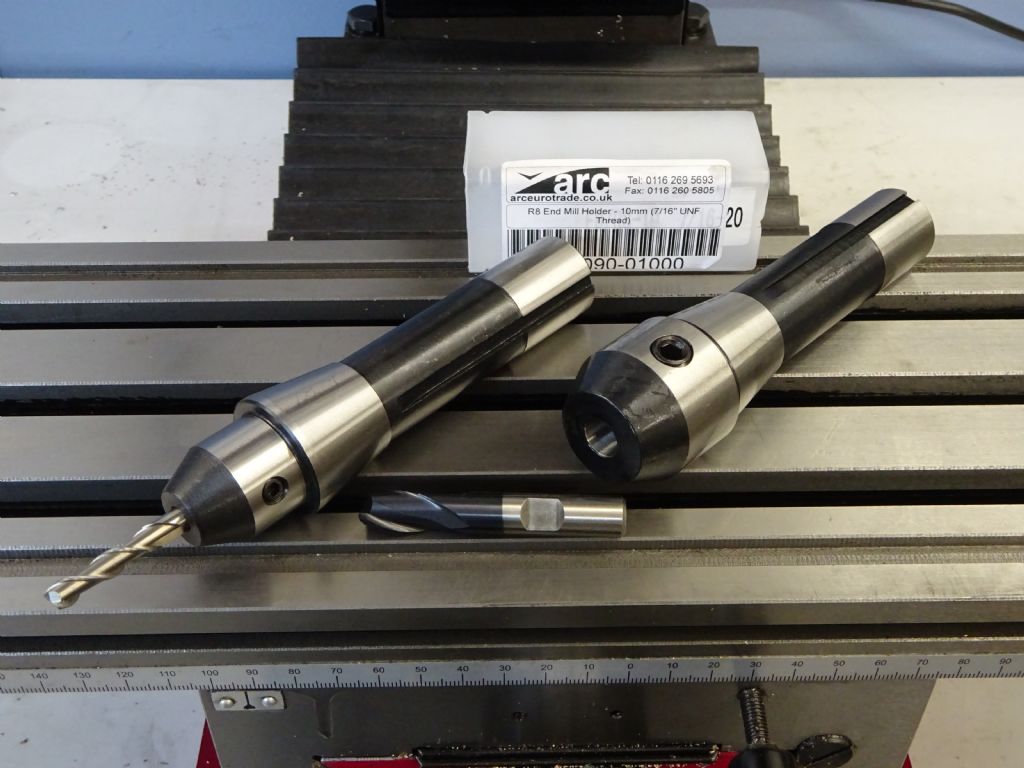I want to thank everyone for your thoughtful and creative suggestions, questions and implied questions.
Encouraging news: Collets with pins to engage and retain Weldon-flat-shank tools have been made and used before by MEW members.
Question: Why don’t I use a setscrew or ER collet holder?
Answer: They have excess stick out compared to a MT collet (see later tests). Stick out leads to chatter, vibration, tool wear and small tool breakage. My ER32 collet adapter sticks out even further than my setscrew (sidelock) tool holder. Of secondary importance is increasing headroom.
Note: According to G-Wizard and others, excess stick out (defined as a multiple of cutting tool diameter) must be taken into consideration when establishing milling parameters. (usually by slowing the feed rate)
Several respondents suggested (and pictured) setscrew tool holders designed with less stick out than mine and even suggested making one from a blank arbor. Still, with setscrew holders a solid bore with the necessary clearance, adds to the TIR. See spring collets, next.
Don’t spring collets (such as MT, DA, Myford and ER) automatically center the tool inside their taper? And if the answer is Yes, then quality spring collets might center the tool to at least the TIR of the spindle thus eliminating some of the vibration/chatter? Observation: Limit pin protrusion into the Weldon flat area so as not to apply unwanted radial pressures that force tool eccentricity.
Question: What was the problem I was trying to solve?
Facemill chatter was exacerbated when milling hardened steel workpieces. Chatter problems traced to excess vibration and deflection which can be caused by any of the following:
· Weak or low-mass lightweight machines
· Spindle stick out (flexing) and/or excess quill extension (unavoidable on many mill drills)
· Non-concentricity of cutting tools
o Manufacturing tolerances
o Bent or worn tools
o Excessive tool length [or “long-series-cutters”] causing tool flexing
· Machine vibrations induced by the following:
o Workpiece “material conditions”
o Unbalanced rotating mass
o Climb cutting vs conventional cutting due to force vectors
o Unbalanced step-overs/lack of tool overhang, see next
o Cutter width not appropriate for workpiece width (aka improper step over/overhang)
o Improper feed rate, given certain “cutting conditions”
o Excess cutting edge radius and/or a chip load which is less than the cutting edge
My facemill chatter problem was traced to excessive stick out. Thus, my search for a reduction of stick out. Changing feeds and speeds helped, but not appreciably.
Theory: Why would spindle runout reduce tool life? Because “runout=uneven chiploads” source: **LINK** This author also refers to Weldon holders as “sidelock” toolholders. He describes techniques to reduce runout and one I have tried with much success he calls “clocking”.
Cutters don’t pull-out for a majority of the respondents. But, it has occasionally occurred to me and the other students, particularly when side-milling in aluminium using an endmill with a strong helix. At school we used R8 collets and “sidelock” tool holders. Only the R8 collets allowed tools to pull out. This was my reason for restricting the Weldon flat from axial movement on my home-based MT2 mill.
Tentative conclusion: Since no one else has this problem of cutter pull-out, am I looking for a solution to a non-problem or is there another solution, maybe more knowledge of how to use high-helix endmills?
 JasonB.
JasonB.




